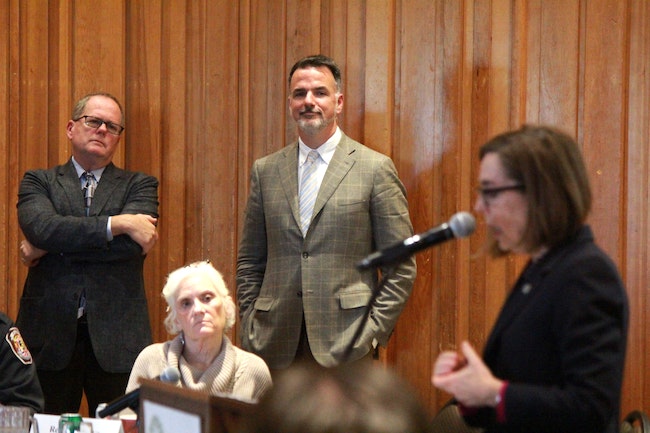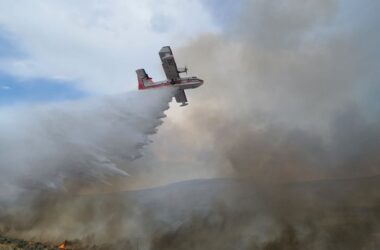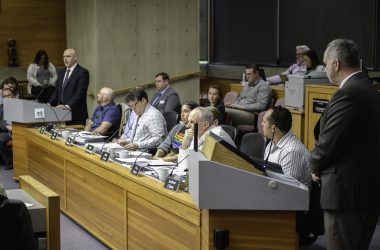 The Governor’s Council on Wildfire Response met Thursday for its final meeting. (Sam Stites/ Oregon Capitol Bureau)
The Governor’s Council on Wildfire Response met Thursday for its final meeting. (Sam Stites/ Oregon Capitol Bureau)
After revealing last month that it will take $4 billion to improve the state’s ability to respond to catastrophic wildfires, Gov. Kate Brown’s Council on Wildfire Response on Tuesday released recommendations on how the money should be spent.
The report said the state should focus on creating fire-adapted communities, restoring and maintaining resilient landscapes and effective wildfire response.
The 110-page report contains 37 specific recommendations with short-term, mid-range and long-term solutions. The council said the highest priorities are working with power utilities to create risk mitigation plans, changing building codes to require defensible space around homes built near forests, reducing fuels within forests that cause catastrophic fires and educating the public on wildfire prevention.
[ Help build Salem Reporter and local news – SUBSCRIBE ]
The council also called for a new financing system to pay for wildfire suppression.
“These are big costs, and they’re obviously big investments, but the cost of inaction greatly exceeds the cost of action,” said Matt Donegan, council chair.
The council last month presented its broad plan to Brown last month, outlining a need over 20 years for $4 billion. At that time, Donegan explained that Oregon uses an antiquated model for fire suppression and mitigation which was created for a state with a third of its current population and even less resources.
Brown and Donegan point to one finding within the report they feel justifies the vast investment it’s going to take Oregon to modernize its wildfire response.
The report calculates that associated costs such as medical needs, loss of tourism and damage to infrastructure and watersheds are 11 times higher than the cost of wildfire suppression.
In an interview Tuesday, Donegan said the state spent $533 million on suppression in 2018, putting the associated costs at about $6 billion.
“Over 20 years we could easily be talking about tens of billions of dollars of damage,” Donegan said.
Brown said in a statement Tuesday that the report is a reminder that warming temperatures around the globe continue to increase the year-round risk of wildfire and the price tag that comes along with them. She said that if the state doesn’t act on climate change soon, Oregonians could see never-ending wildfire seasons.
“The devastation left in the wake of recent wildfires across the West is yet another alarming reminder of how this generation and the next will bear the costs of climate change — in lost dollars, homes, and lives,” Brown said. “If we do not act now, Oregon’s grandchildren will be left to pay an appalling price.”
Donegan believes that wildfires hit vulnerable populations hardest. Children and seniors are adversely affected by smoke caused by wildfire. Many of the 85 people who died in the Camp Fire that ripped through Paradise, California, last year were disabled, and low-income people don’t have the resources to adapt their homes by installing air filtration or cleaning the landscape around their homes to create defensible space, he said.
“To actually have a proactive plan in place for our most vulnerable communities is important,” Donegan said.
Donegan said he has heard the call from Oregonians for a cohesive response, and now the council has provided lawmakers and state agency leaders the framework to act.
Brown’s natural resources policy advisor Jason Miner will join Donegan when he presents the council’s recommendations to lawmakers during legislative days at the Capitol next week.
Contact Reporter Sam Stites: [email protected] or 971-255-2480.









